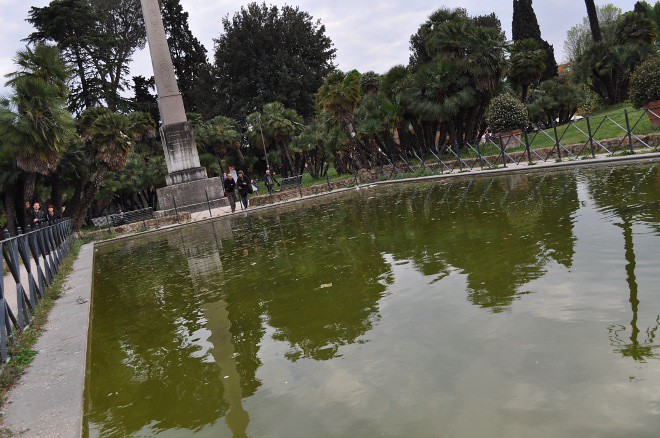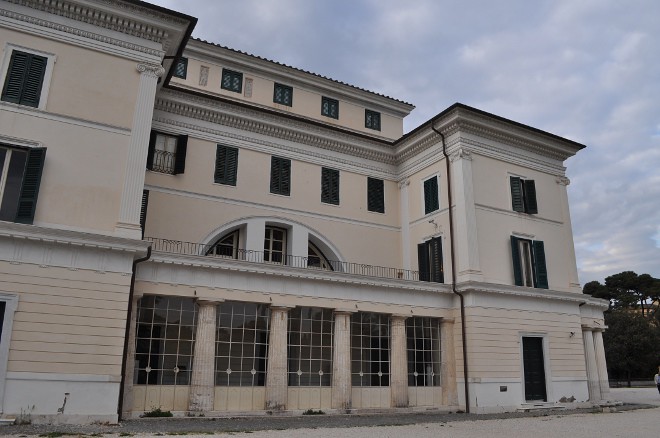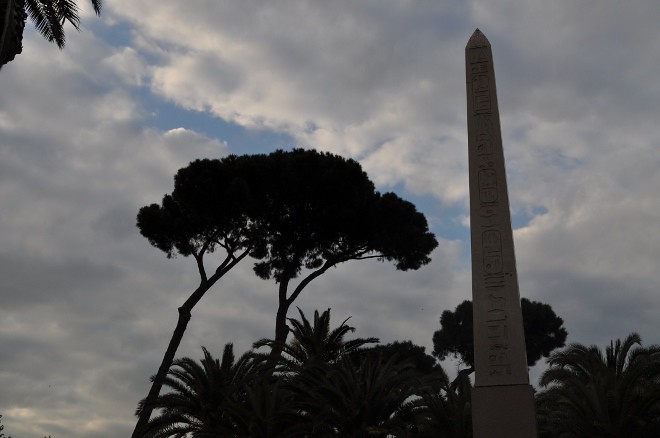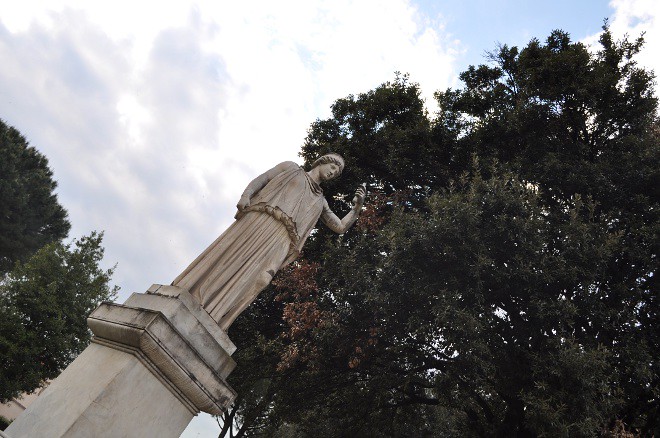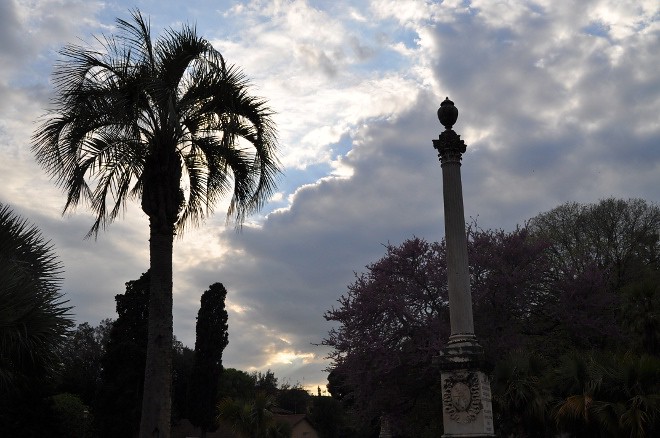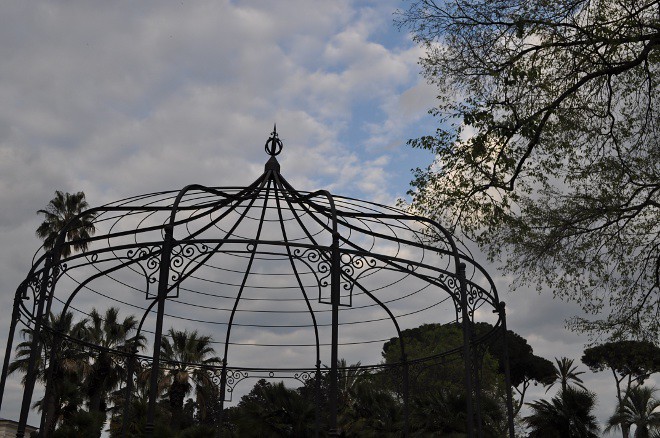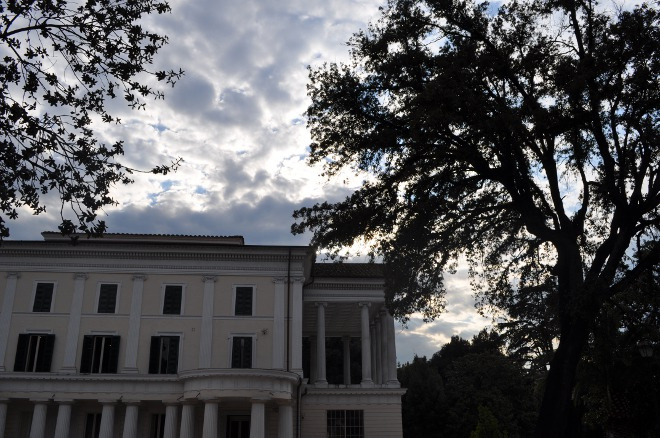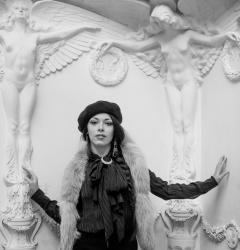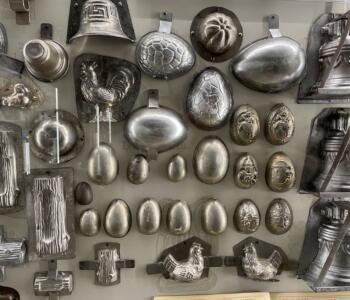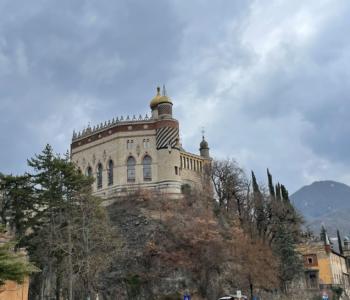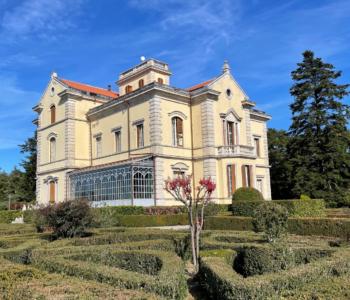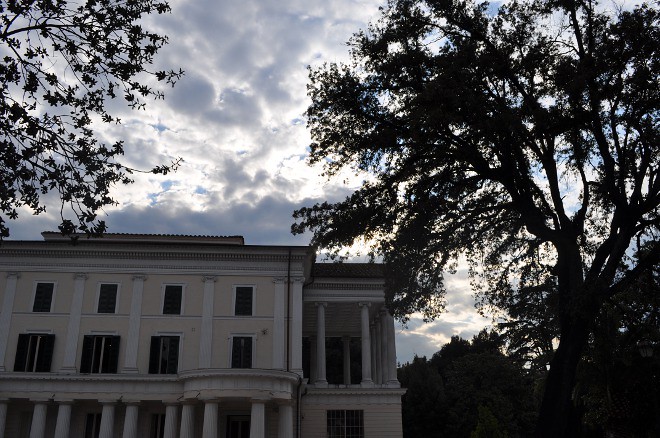
Villa Torlonia is a Noble House located in Rome which became famous for being Mussolini’s residence during Fascism. Actually, Mussolini’s period is only the last one of the many changes the Villa had gone through. It includes a park and three houses: The Nobile Casino (or Palace), The House of the Princes and The House of the owls, which deserves a special attention. Here is shorty the story of the Villa.
.
Villa Torlonia was purchesed by Giovanni Torlonia after he inherited the title of Marchese in 1797.
He commissioned Giuseppe Valadier to renovate the property to raise it to the standard of the other villas belonging to noble families in Rome. So between 1802 and 1806 Valadier turned the main building into an elegant palace, transformed the small Casino Abbati into a very gracious palazzina (today the Casino dei Principi). He also laid out the park with symmetrical, perpendicular avenues around the palace, and the view to the north from the building.
Following the death of Giovanni, in 1832 his son Alessandro commissioned the painter and architect Giovan Battisti Caretti to enhance and increase the size of the property. In addition to enlarging the size of the buildings, Caretti constructed several features in the park to suit the eclectic taste of the Prince: these were the False Ruins, the Temple of Saturn, the Tribuna con Fontana, an Amphitheatre, the Coffee-house, and the Chapel of Sant’Alessandro (the last three no longer exist).
Alessandro employed two other architects: Quintiliano Raimondi for the Theatre and Orangery (today known as the Lemon-house), and Giuseppe Jappelli, who was in charge of the entire south section of the Villa. This area was completely transformed with winding avenues, small lakes, exotic plants and decorated with buildings and outdoor furniture of unusual taste: the Swiss Hut (later transformed into the Casina delle Civette), the Conservatory, the Tower and Moorish Grotto, and the Tournament Field. The huge self-celebratory project culminated in 1842 with the erection of two pink granite Obelisks that commemorated Alessandro’s parents, Giovanni and Anna Maria Torlonia.
In an attempt to relaunch the splendour of the family name, his heir, another Giovanni, built the Medieval House, another enclosure wall, the Red House, and the Watchman’s House at the entrance on Via Spallanzani, and he radically transformed the Swiss Hut to turn it into the current Casina delle Civette.
In 1919 a large underground Jewish cemetery was discovered in the north-west area of the grounds.
In 1925 the Villa was bestowed upon Mussolini as a residence, where he remained until 1943. The presence of the Duce did not bring substantial modifications.
In June 1944 the entire property was occupied by the Allied High Command which remained there until 1947.
The Villa was bought by the Municipality of Rome in 1977 and a year later it was opened to the public. A series of restoration projects was initiated in the 1990s in both the park and buildings.
source: museivillatorlonia.it
THE PALACE (INSIDE):

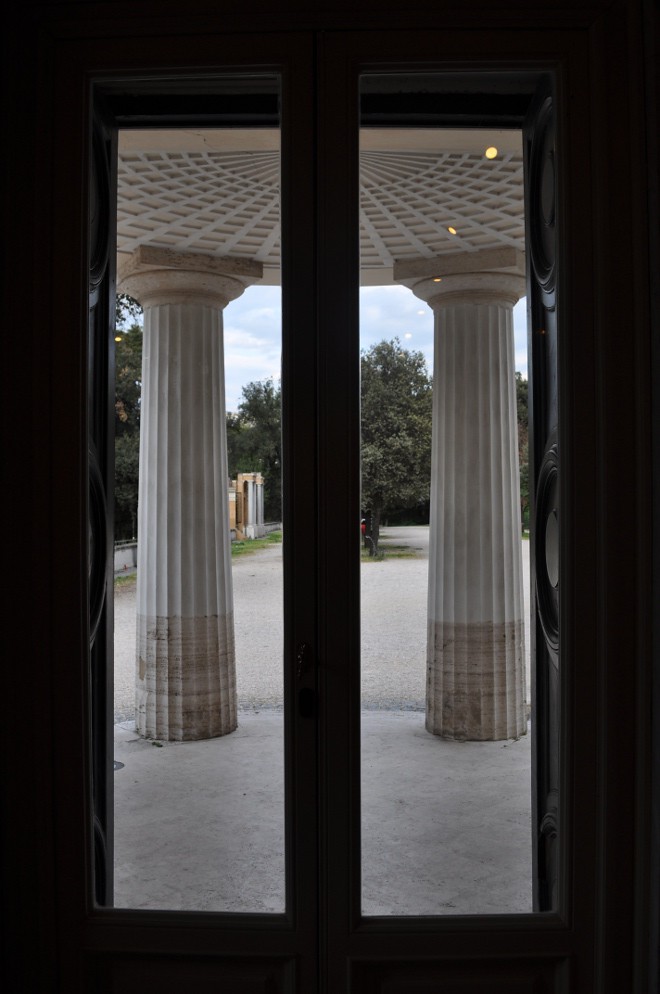
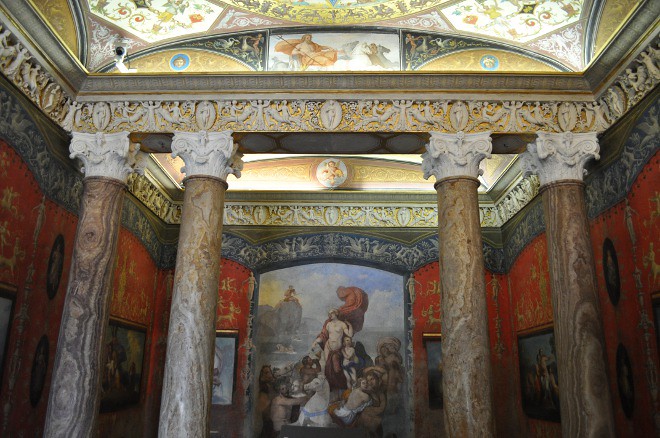
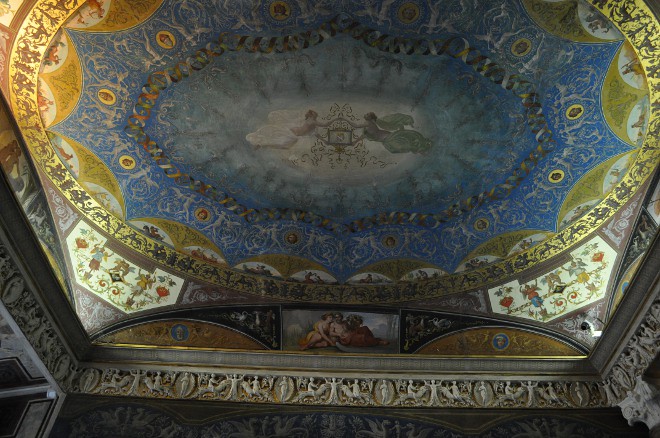
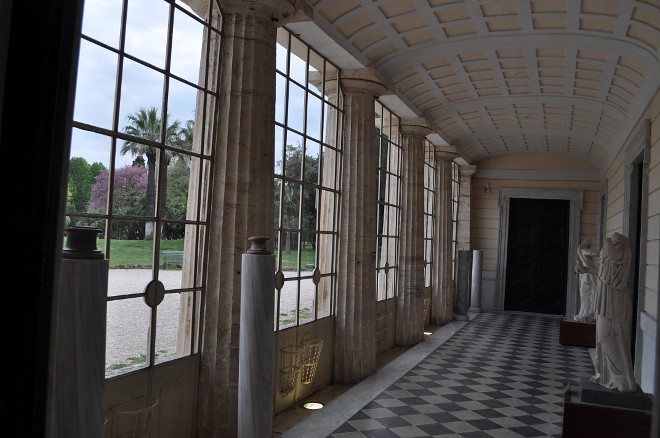
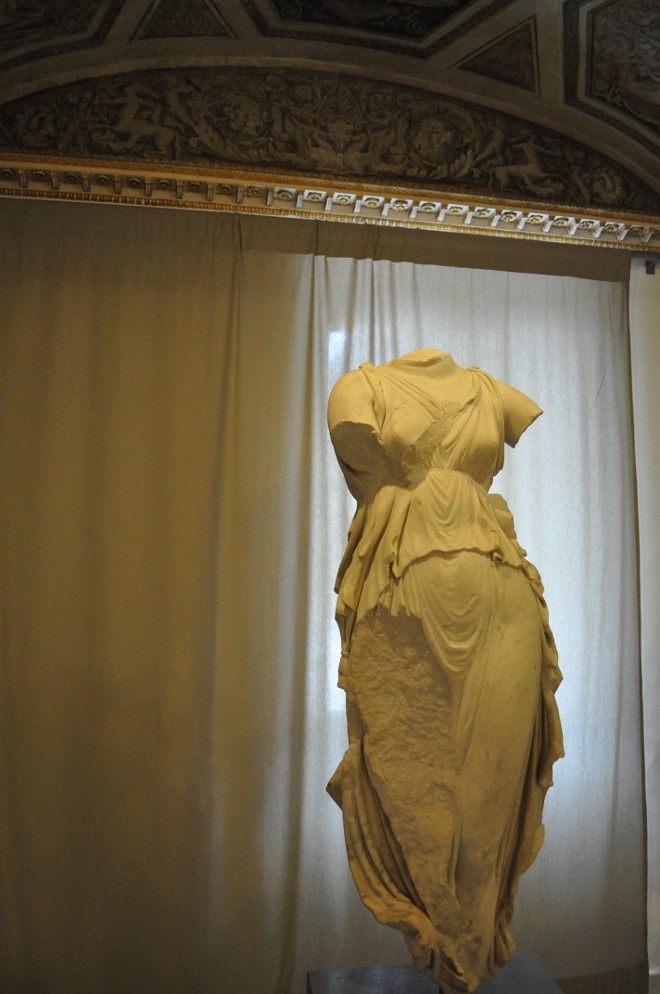
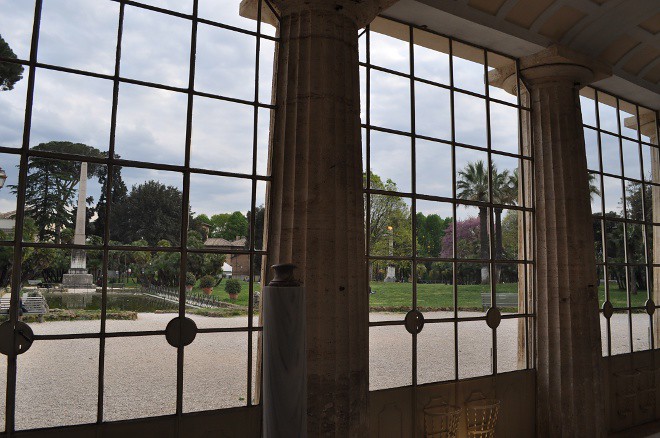
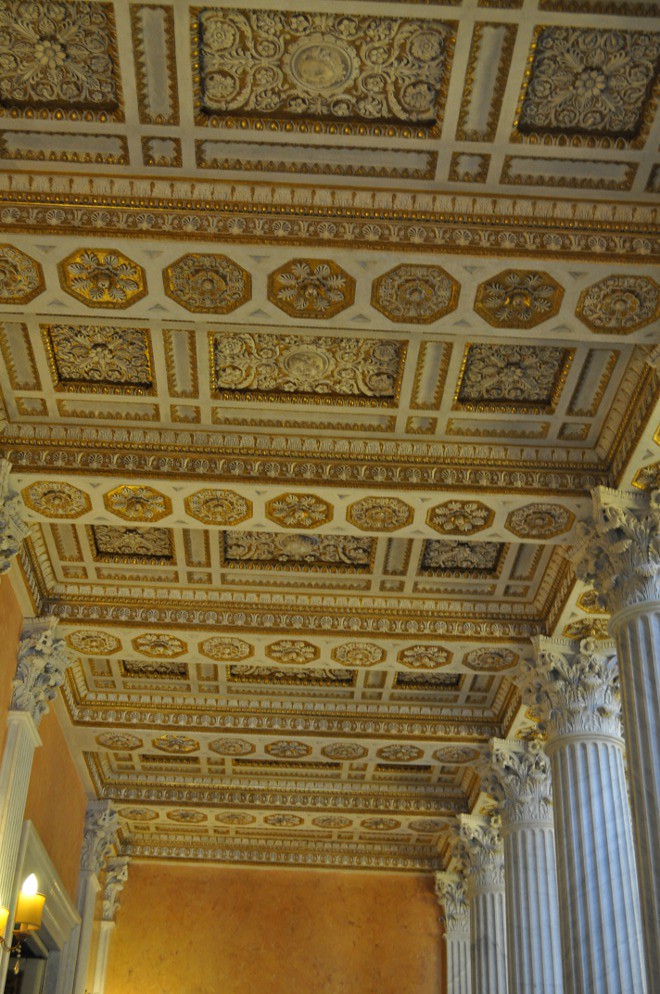
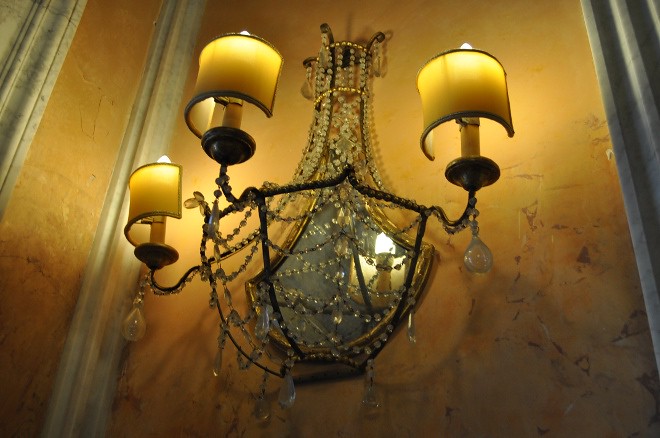
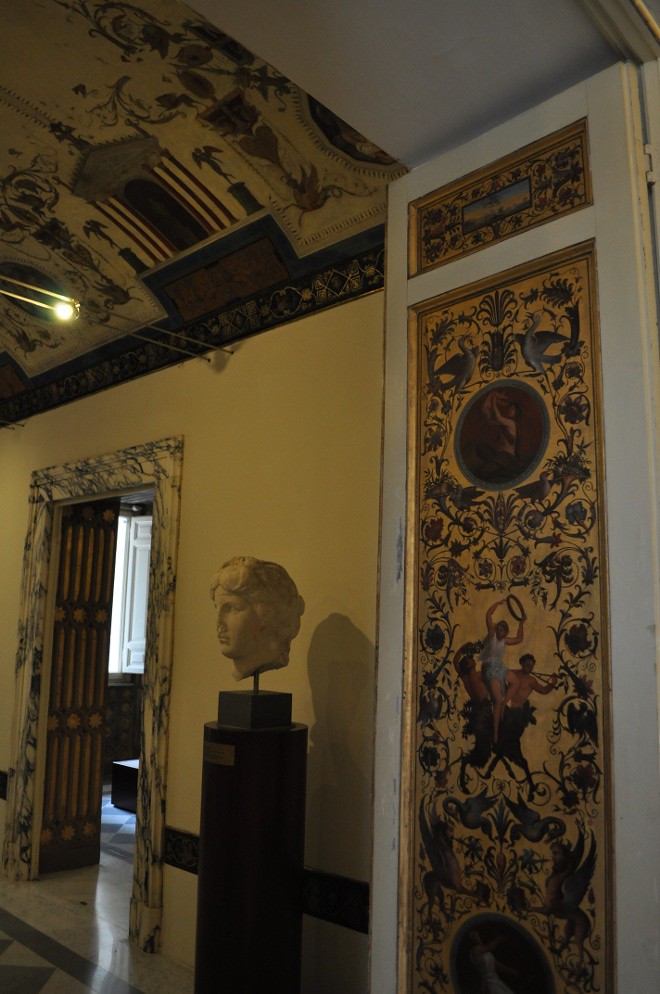
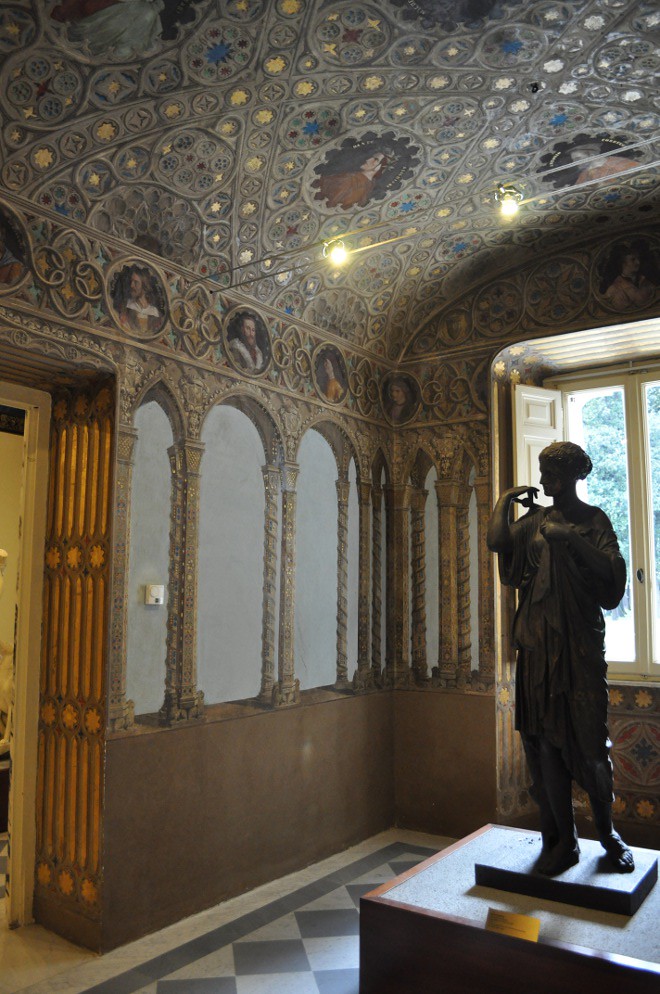
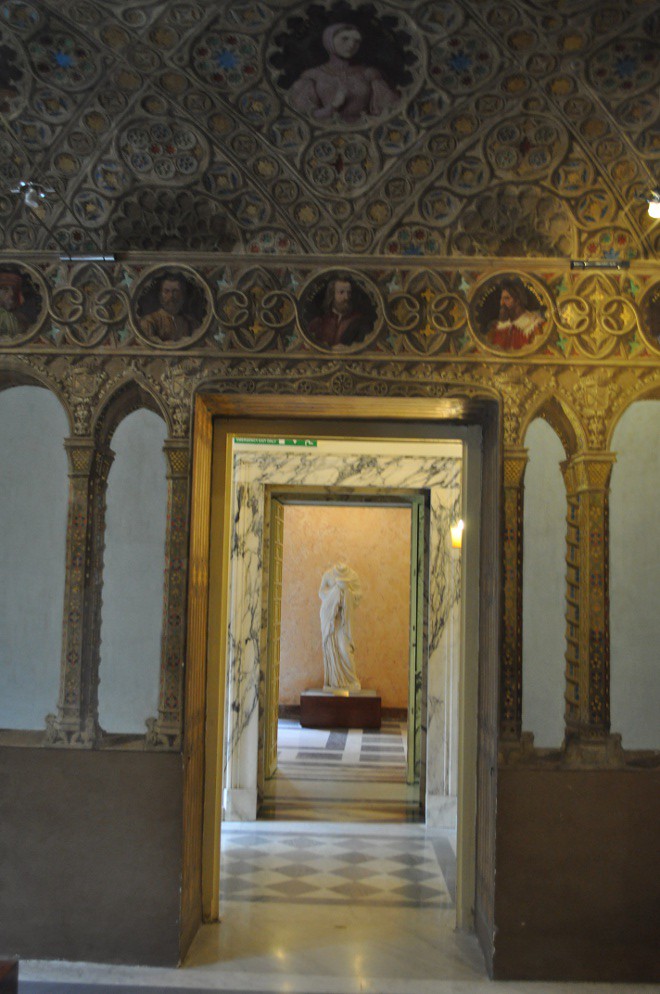

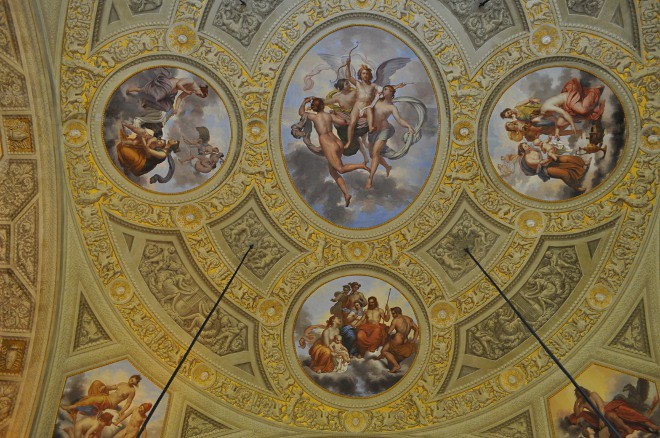

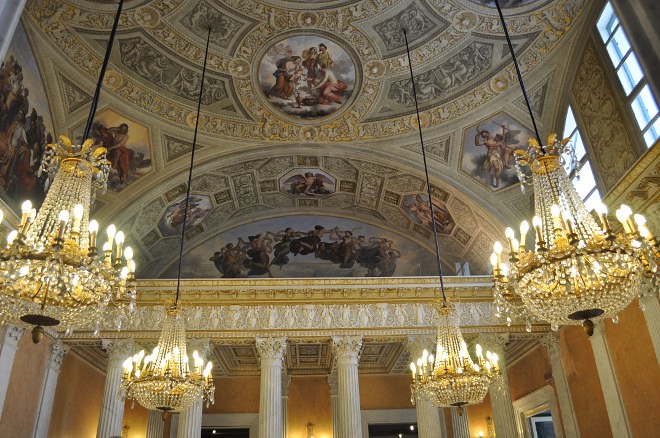
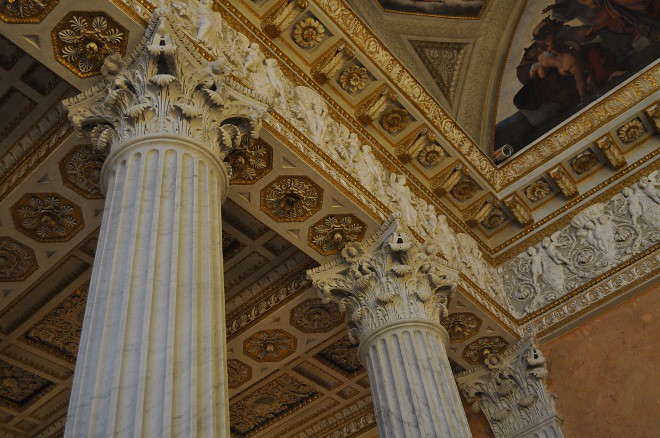
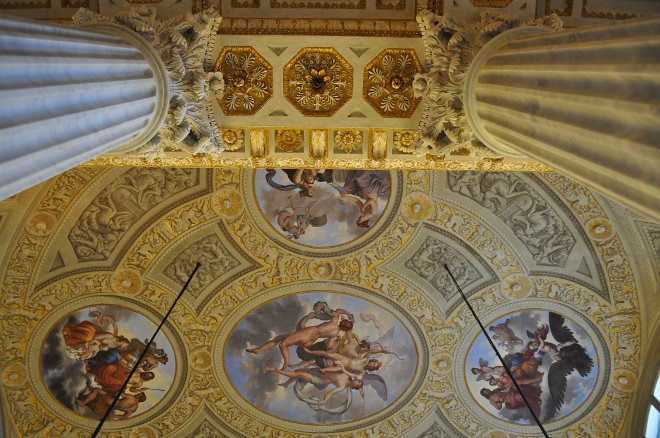
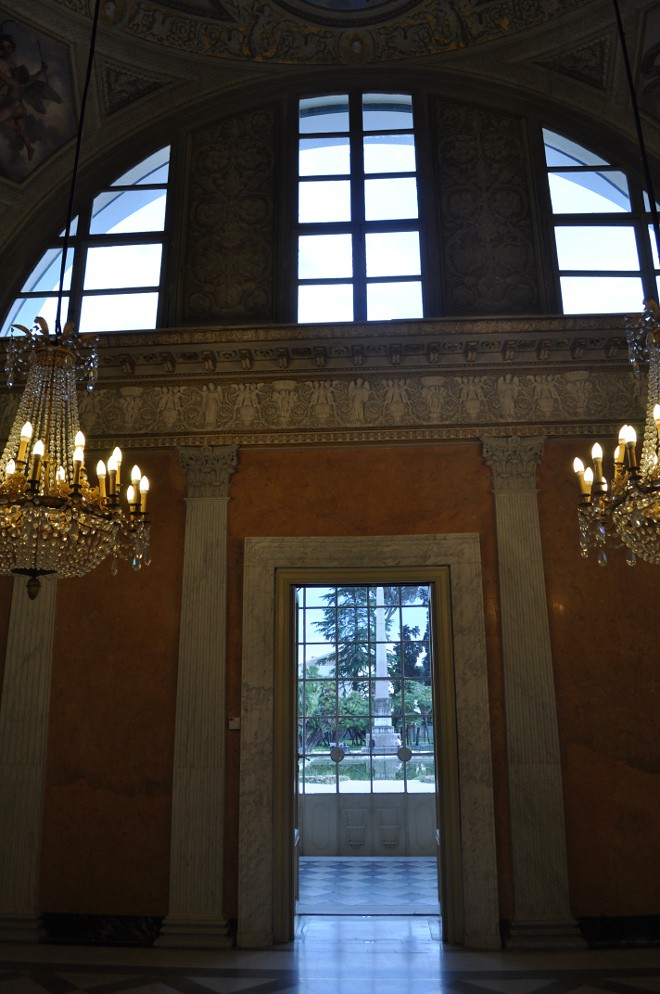
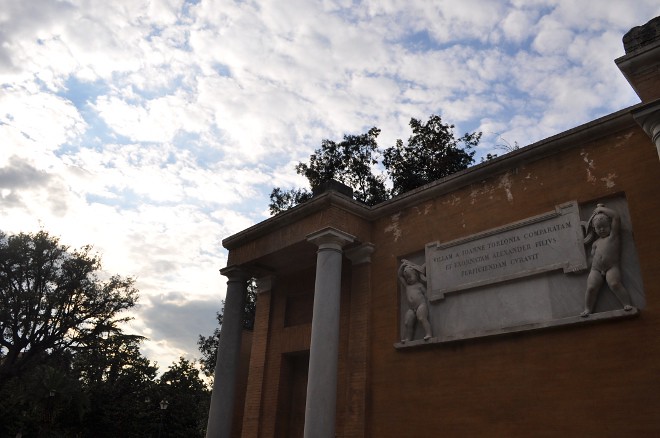
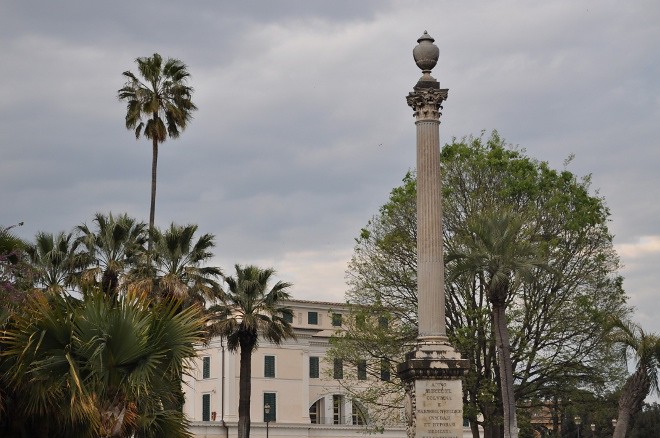
The Palace from outside
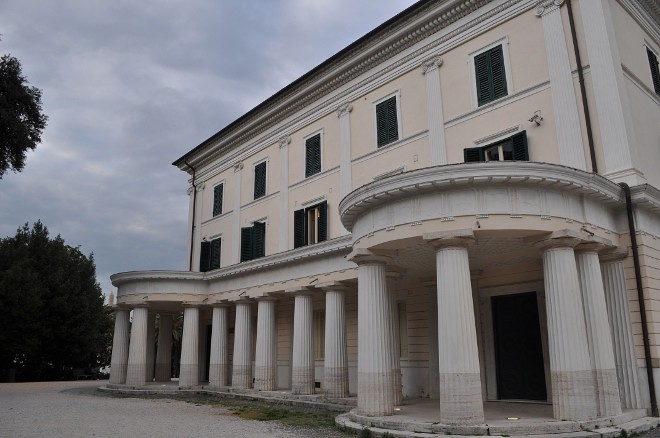
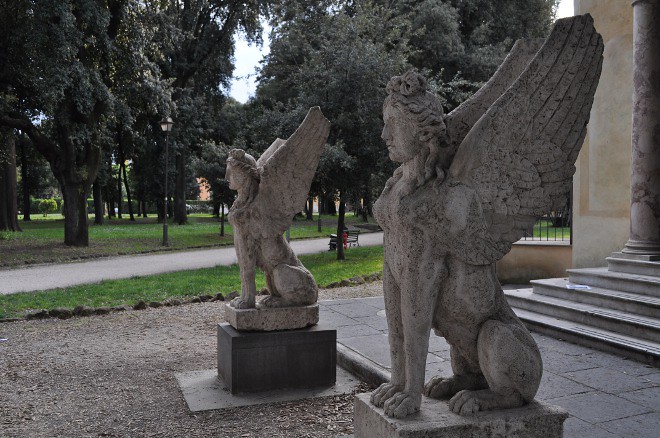
The House of Princes (entrance)
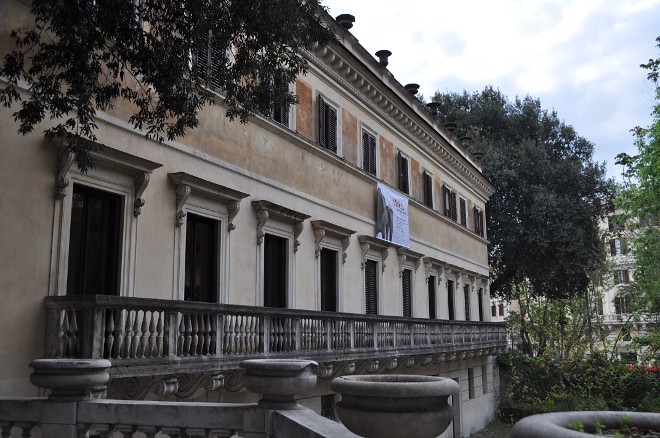
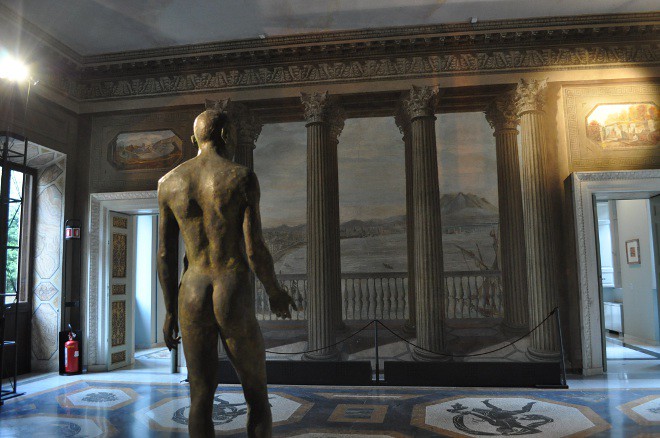
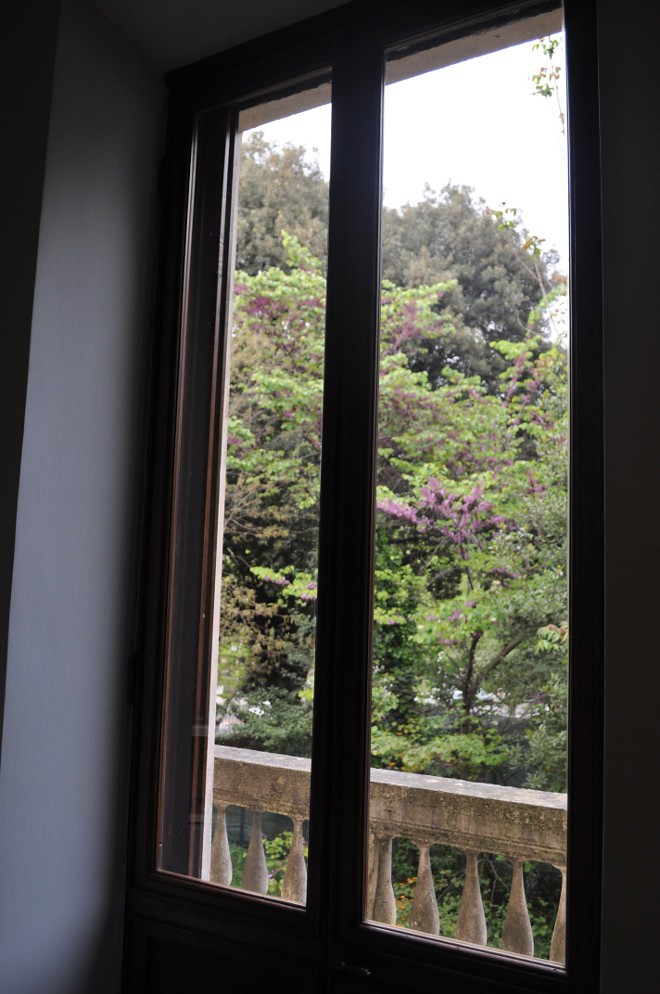

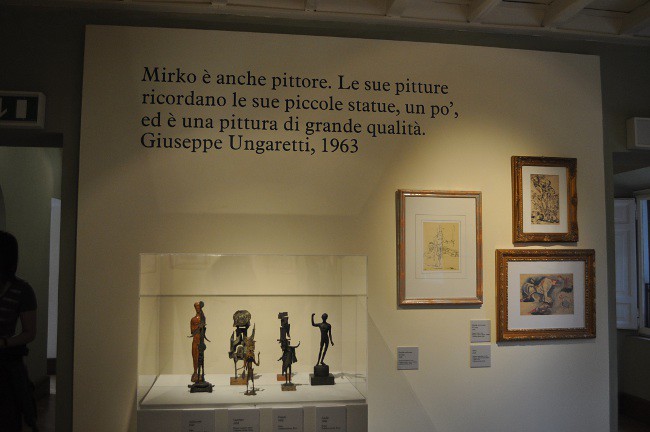
Mirko’s exhibition

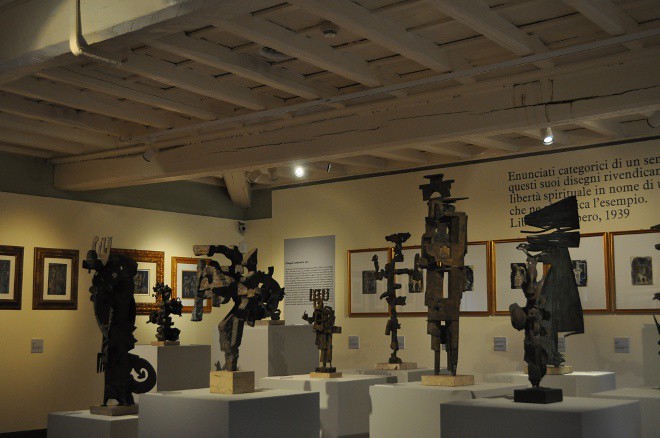
THE PARK:
